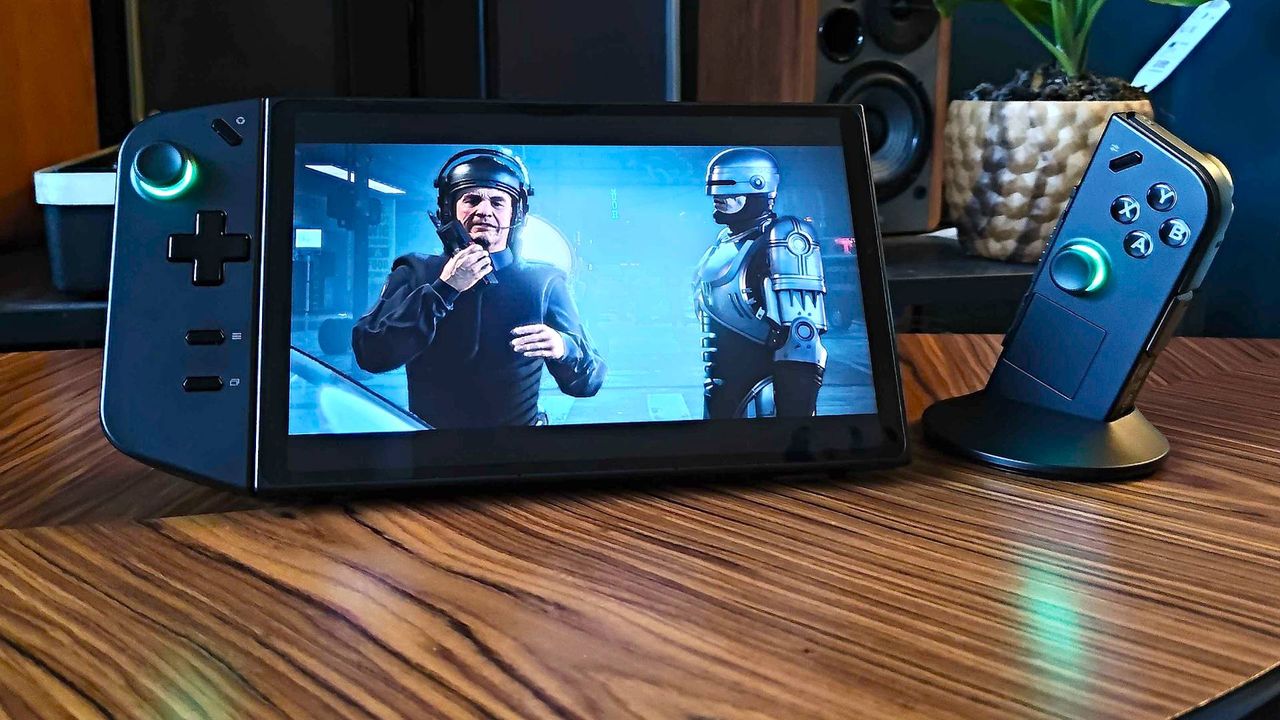
November 7, 2025 - A lot has happened since the Lenovo Legion Go arrived on the scene. Not only is there now a fresher faced Lenovo Legion Go S on the scene with nicer controls, but there's a sequel device on the way to take on punchy newcomers like the ROG Xbox Ally X. I've added some updates below that provide some context, and they should help you decide if the 2023 handheld is still the right portable for you.
If testing the Lenovo Legion GO has taught me anything, it’s that sometimes less is more. Don’t get me wrong, I love impressive specs as much as the next handheld nerd, but this new portable PC tries too hard to impress with gimmicks arguably no one asked for. As a result, it feels more like a prototype than something ready in the wings to take on the Steam Deck and Asus ROG Ally, and that’s a damn shame when you consider what it’s actually capable of.
At $799 / £799, the Lenovo Legion GO is one of the more expensive best gaming handheld contenders around. You could argue it's a small price to pay when you consider its speedy 8.8-inch screen and beefy Ryzen Z1 Extreme GPU, but the fact you can now grab an Asus ROG Ally for under $600 sort of damages that argument. But, if I’m being candid, even a lower MSRP wouldn’t have helped this mobile rig feel as refined as something like the Steam Deck, and I wish they’d kept it in the proverbial oven for a bit longer.
I’m not trying to be funny, but I think one of the Legion GO’s biggest flaws is that it’s a handheld that feels like it was made by laptop makers. I mean, that statement is inherently silly considering that’s exactly what it is, but I’ll hopefully illustrate why that’s something you want to avoid when designing a handheld gaming PC. It’s also the first time I’ve received vibes like this from a device since the 2010s, so I can only hope this isn’t the scene taking a proper step in the wrong direction.
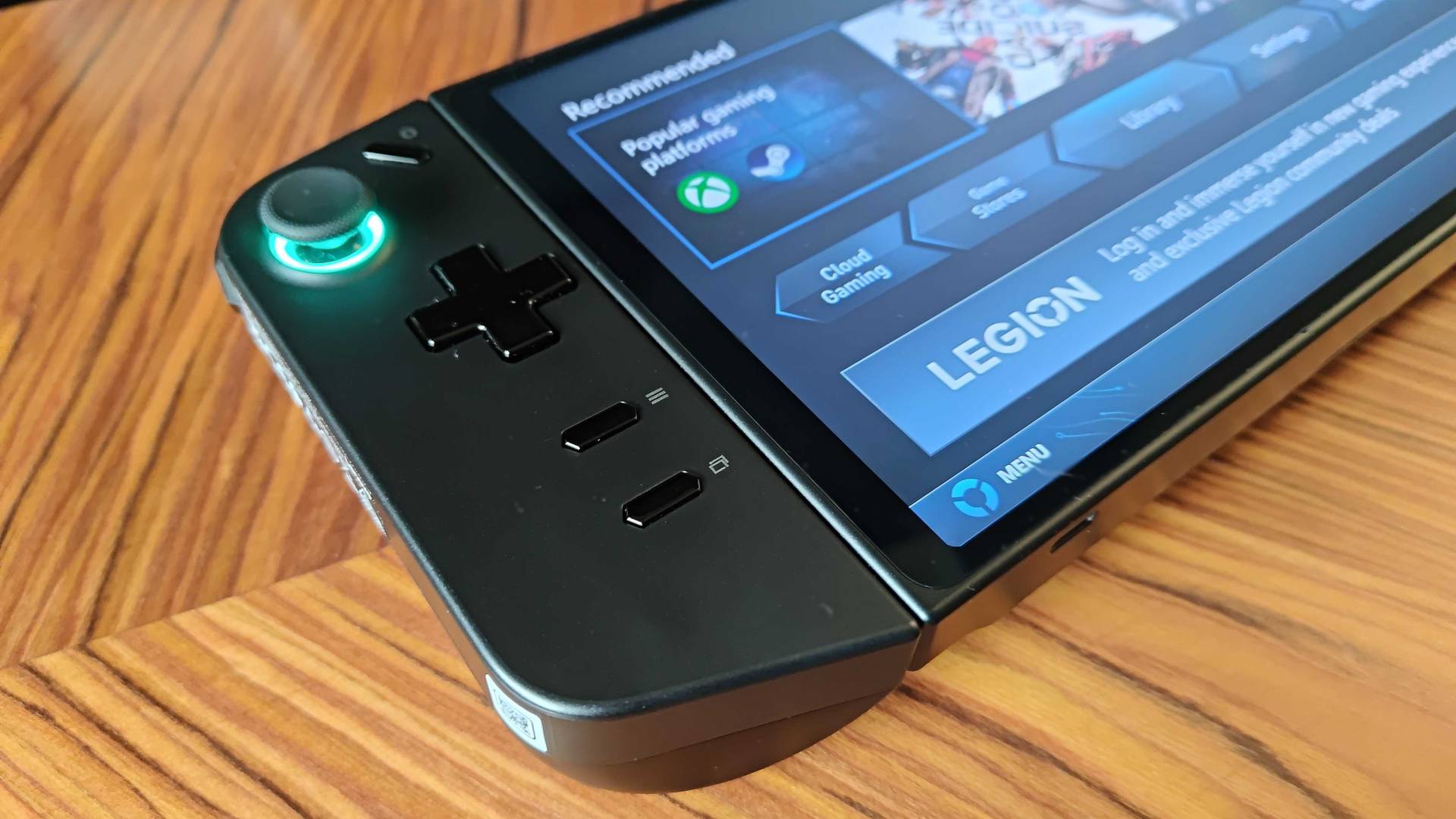
Specs
In terms of raw specs, the Lenovo Legion GO is one of the beefiest handhelds on the battlefield. Naturally, the first thing that’ll catch many an enthusiast’s eye is the fact it's armed with an 8.8-inch 1440p 144Hz touchscreen, as it’s one of the first portable PCs to actually provide such a lofty refresh rate resolution combo. Theoretically, this portable powerhouse should feel smoother than all its rivals when paired with an appropriate frame rate, and spoilers, that latter caveat is going to crop up later.
Specs |
Lenovo Legion GO |
Asus ROG Ally |
Steam Deck |
|---|---|---|---|
Price |
$799 / £799 |
$699.99 / $599.99 |
From $399 |
CPU |
AMD Ryzen Z1 Extreme |
AMD Ryzen Z1 Extreme |
AMD Custom APU (Van Gogh) |
GPU |
AMD Radeon RDNA 3 |
AMD Radeon RDNA 3 |
AMD Radeon RDNA 2 |
RAM |
16GB |
16GB |
16GB |
Storage |
512GB |
512GB |
512GB |
Display |
8-inch 1600p IPS touchscreen |
7-inch 1080p IPS touchscreen |
7-inch 800p IPS touchscreen |
Battery |
13,240mAh (49.2WH) |
5200mAh (40Wh) |
5,313mAh (40Wh) |
Operating system |
Windows 11 |
Windows 11 |
SteamOS |
Size |
298.83mm x 131mm x 40.7mm |
280mm x 111mm x 21.2mm |
298mm × 117mm × 49mm |
Weight |
854g |
669g |
608g |
As for innards, the Legion GO features that aforementioned AMD Ryzen Z1 Extreme within its chonky chest – the same chip as the Asus ROG Ally. Lenovo pairs the APU with 16GB RAM and a 1TB SSD, with a dual 49.2WHr battery setup helping keep everything juiced up while untethered by its 65W charger.
All the other expected traits of a handheld PC are also present, including Bluetooth, USB-C connectivity, a MicroSD, and WiFi 6E. Yet, the device technically also comprises three parts, as its controls are actually detachable. Dubbed ‘Truestrike’ controllers, each side boasts hall effect joysticks, haptics, six-axis gyro, two back buttons, and a 900mah battery. The right hand pad just so happens to also have its own trackpad and an optical sensor at its base, which enables it to function like a really irritating gaming mouse.
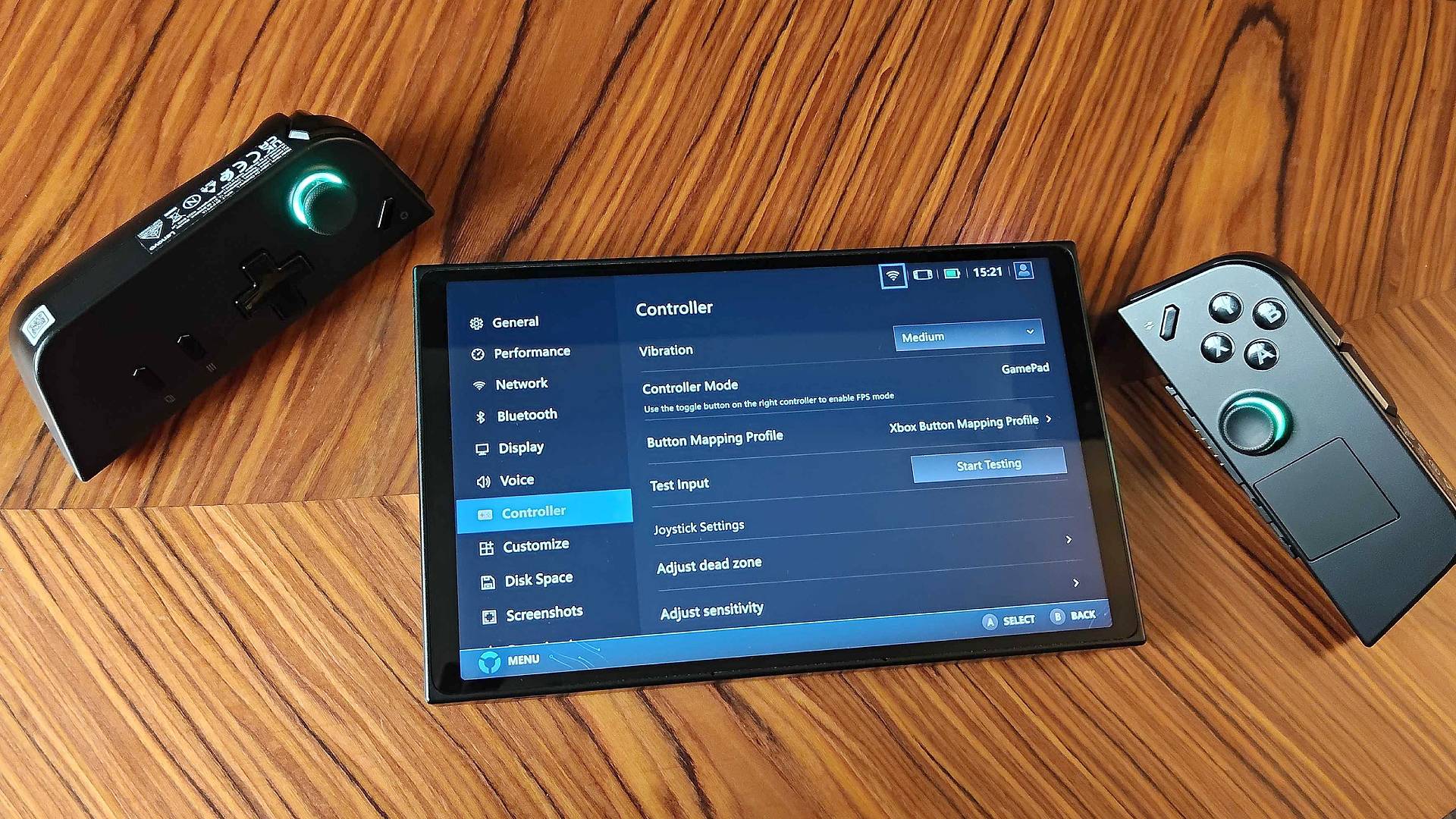
Features
In some ways, the Lenovo Legion Go offers up the same feature set as both the Asus ROG Ally and Ayeneo 2S. All three are Windows 11 handhelds with powerful Ryzen APUs that can technically run anything your conventional gaming PC can. If you’ve ever tried to use Microsoft’s OS on a portable, you’ll know it leaves a lot to be desired, which means handheld markers feel obligated to make their own software to bridge the usability gap.
I’ve personally yet to use a handheld software suite that can remotely compete with SteamOS, but the Legion GO somehow feels jankier than every other alternative. Branded as LegionSpace, the application is designed to facilitate access to all your installed games, vital settings, controller customisation, and performance stats. While it does feature all of those traits, it left a sour taste in my mouth both in terms of aesthetic and usability.
Navigating menus feels unresponsive, the home screen seems hellbent on sending you to a third-party game keys website, and weird quirks like featuring an ‘Android gaming’ option front and centre that links to the Amazon Appstore make the whole affair feel dreadfully unpolished. I feel like Lenovo had a chance to finally great a decent piece of kit that brings out the best in Windows 11, but instead decided to rush out something that’ll just about provide you with access to the essentials.
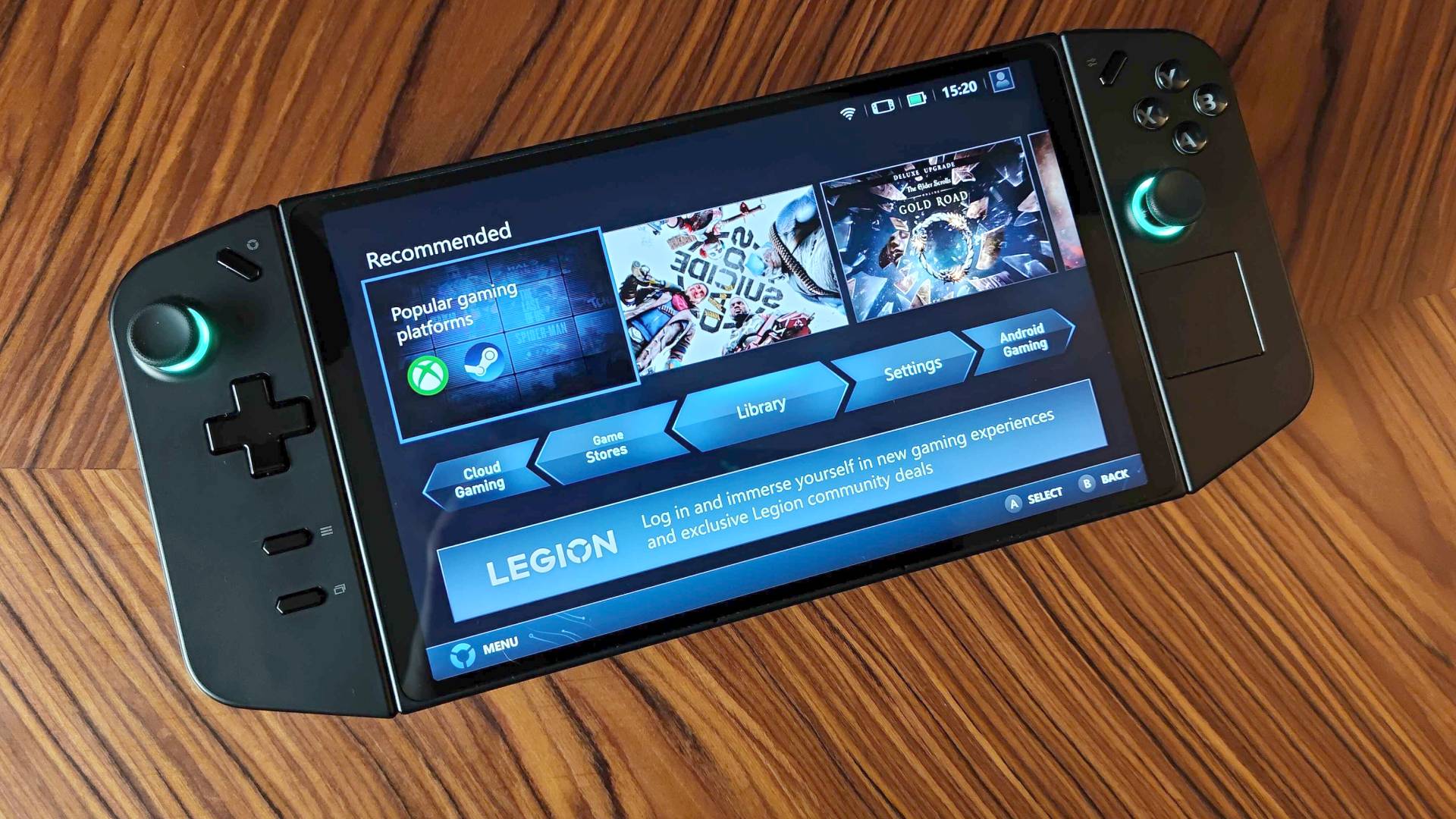
Normally, I try to dive into some positives after taking a swim in a sea of negativity, but since I’m about to touch on Lenovo’s Truestrike controllers, you’ll have to bear with me. At face value, the Joy Con-inspired pads boast a decent array of buttons, sticks, and triggers, and everything feels pretty robust when used in a conventional manner. The only standard part of the gamepads I do have an issue with is the D-pad, as its flat design prevents it from feeling tactile, especially if you’re used to rolling out directions on other controllers.
I'm still not a fan of the TrueStrike controllers, but the Lenovo Legion Go S makes up for the controls by making them built-in rather than detachable. That helps provide the handheld with a much sturdier feel, nicer feeling buttons, and extra features like hair-step triggers, all of which I personally value more than a mouse mode.
So, since the Truestrike duo’s ordinary inputs are completely serviceable, you might be wondering why I sound grumpy. Well, it all boils down to the above and beyond features, as all the extra quirks feel a bit redundant. For starters, the trackpad on the right hand controller is too far down to be used in place of a joystick, as you’ll struggle to reach the corresponding trigger when using it. As someone who enjoys using the Steam Deck’s pads when playing shooters, this was a pretty disappointing discovery to say the least.
The next gripe I have is with fps mouse mode, as I really can’t see why I’d use it over a conventional clicker. By attaching a magnetic base to the pad and flicking a switch, you can dual-wield both controllers while moving the camera with your right hand. At first, I thought it was going to involve some clever gyro tech, but nope, the result is an optical sensor attached to an ergonomically upsetting set of finger triggers. I can see why someone might appreciate the dual functionality of display here from a space saving perspective, but in reality, a wireless mouse isn’t going to take up that much room in your backpack.
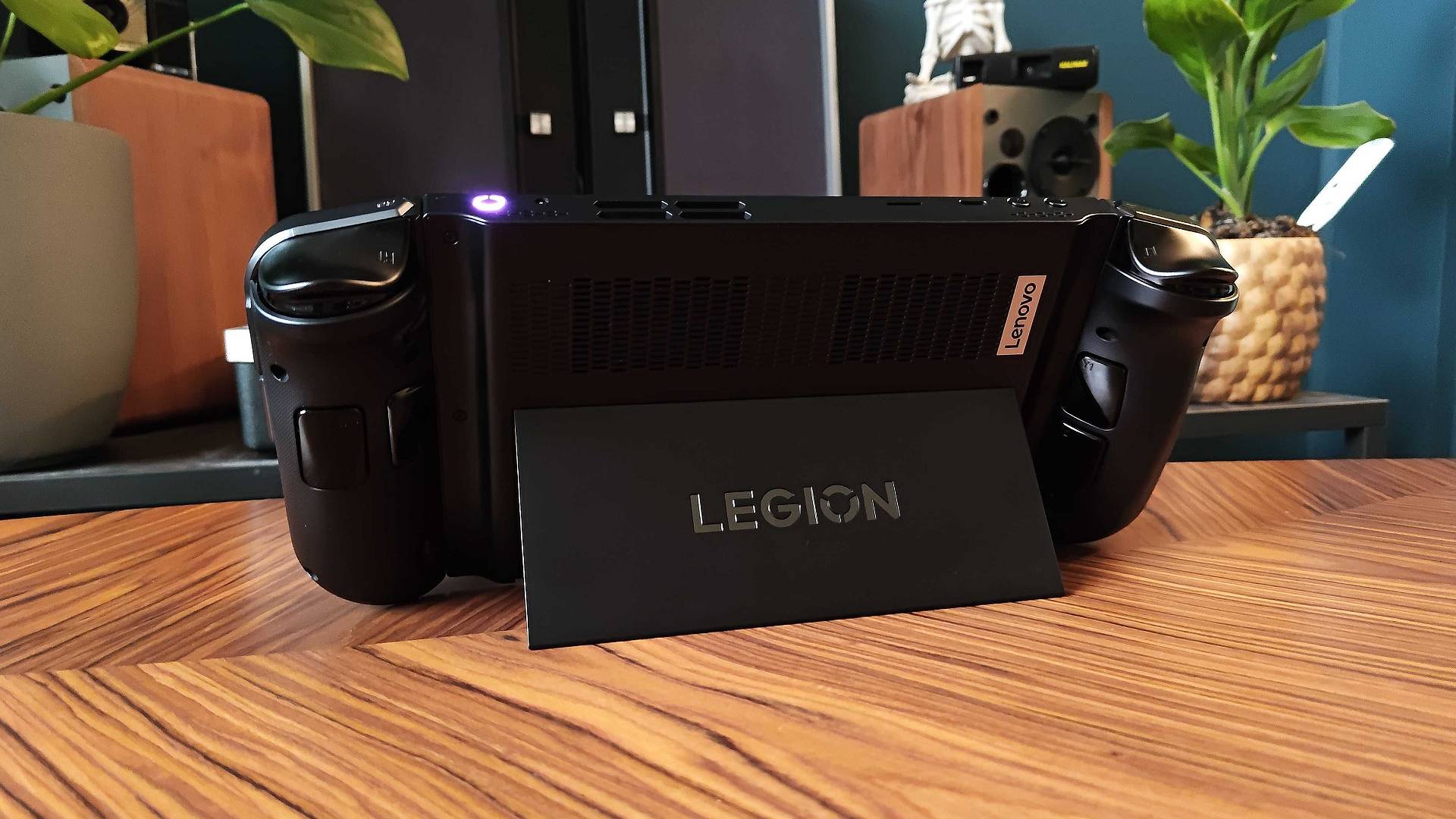
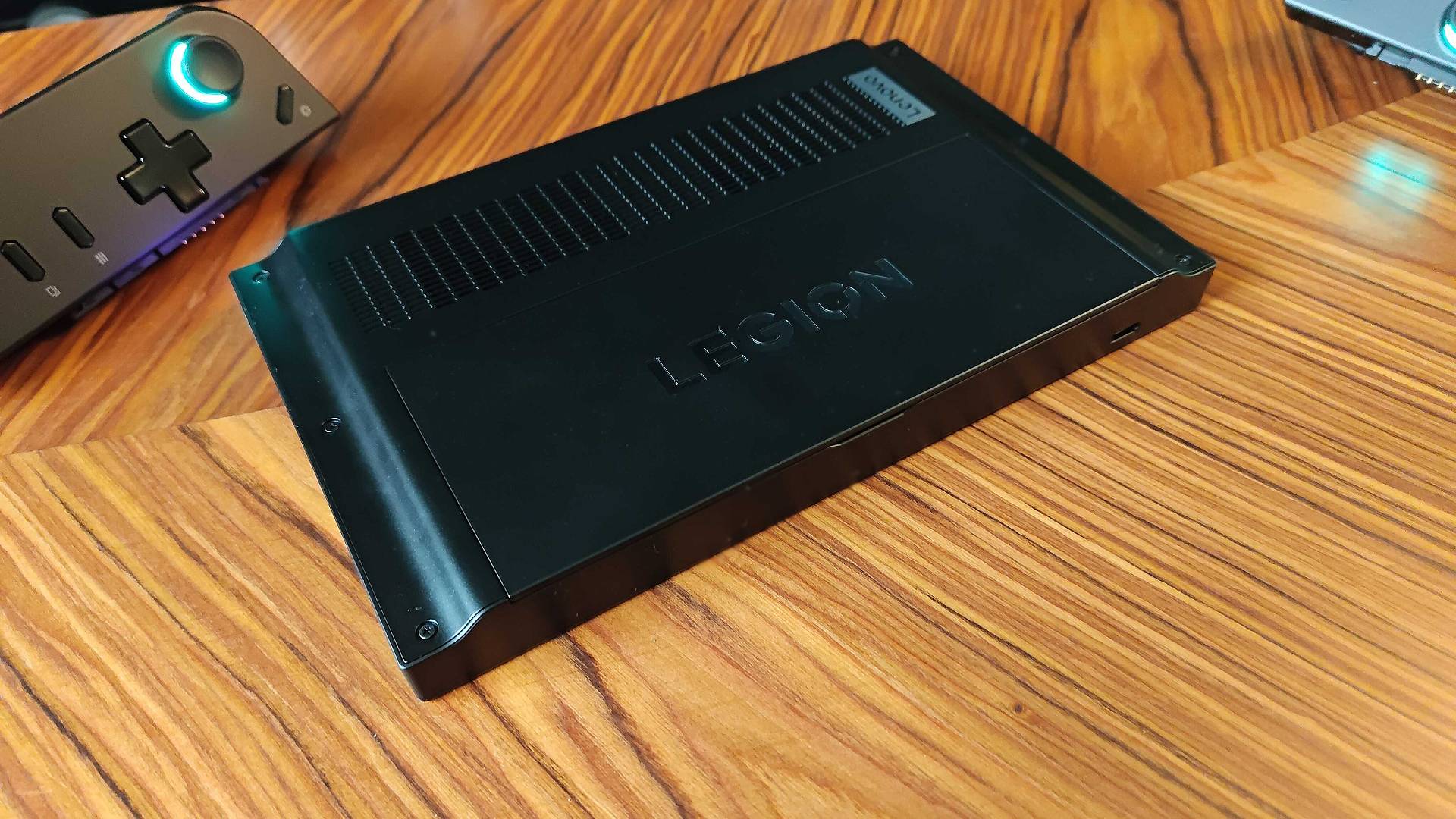
Design
On a slightly brighter note, let’s chat design, as the Lenovo Legion GO isn’t the worst-looking handheld out there. Its thin bezels help protect the extra-large screen from any visual distractions, and while the device is heavier than I’d like, it’s relatively comfortable to hold. RGB lighting around each controller thumb stick sprinkles in the usual level of gaming hardware flair, and cooling vents are kept out of sight around the top and back.
Other nice to have design traits include a wide kickstand that draws influence from the Nintendo Switch OLED, and two USB-C ports, with the bottom input coming in handy for playing while charging. Unfortunately, the rest of the Legion GO’s design is brought down by its Truestrike controllers, as I feel like there was a bit too much compromise to make Lenovo’s take on Joy Cons a thing.
Kicking off with the GO’s overall chonkiness, the girth of the pads at each end makes the handheld feel even more unwieldy than it actually is. I mean, the main body of this device already feels pretty thick, and it’s painfully obvious that there’s a lot of cooling shenanigans going on within. Yet, with the controllers slapped on each side, the portable PC feels even more clumsy, invoking those ‘made by laptop maker’ feelings I touched on earlier.
Removing each controller also feels quite unpleasant, as the mechanism lacks finesse compared to the Switch. Detaching each side involves pressing in a toggle and pulling down, with the sensation feeling more like an awkward wrestle than a slick transformation. The fact the handheld’s body is heavy doesn’t aid the experience, and the process of picking the device and pulling on the pads always feels too precocious.
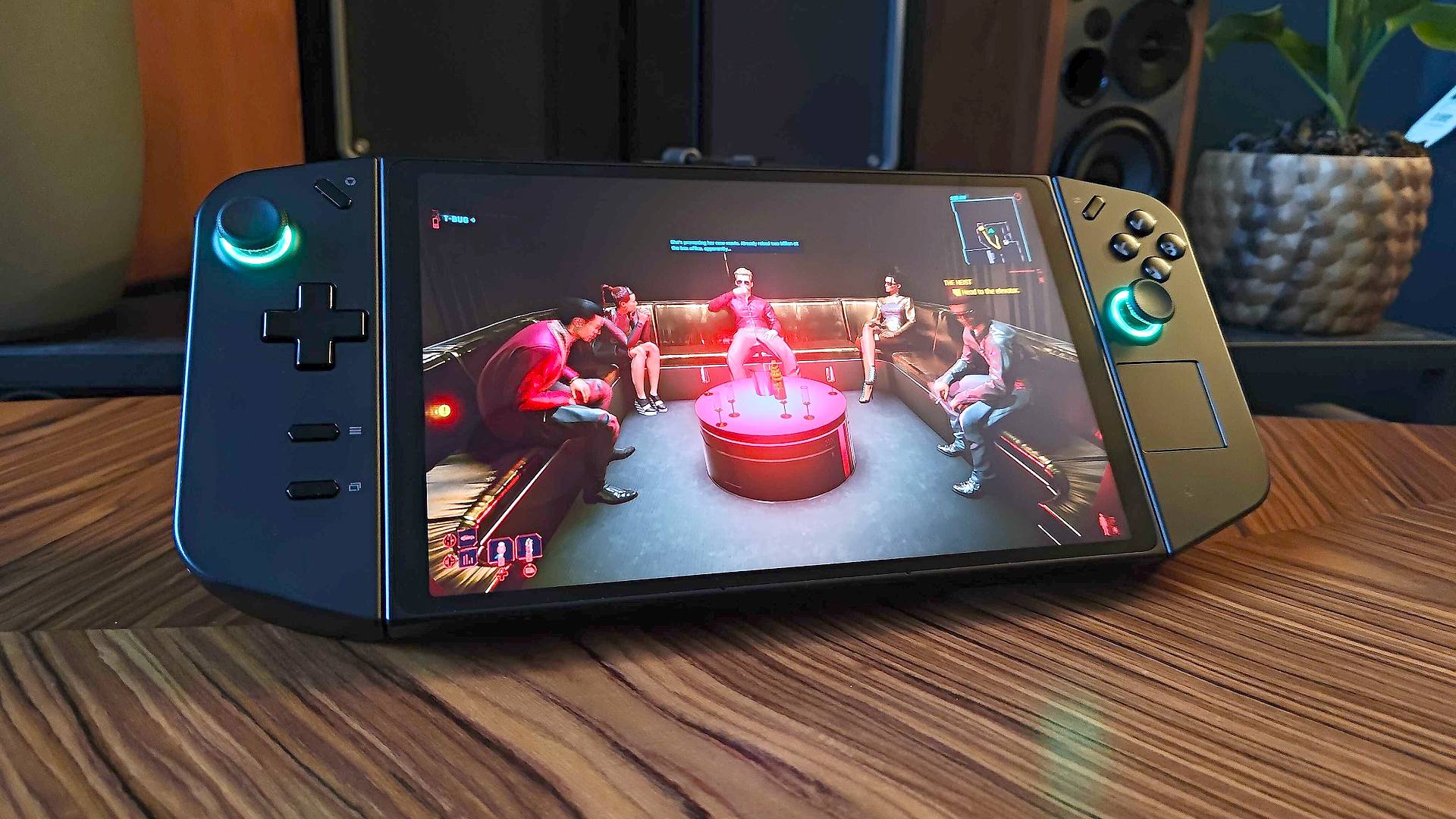
Performance
If there’s one thing the Lenovo Legion GO nails, it’s raw performance, and I was expecting as much considering it’s armed with a Ryzen Z1 Extreme. AMD’s punchy APU already prove its worth when the Asus ROG Ally made its debut, providing higher frame rates overall than the Steam Deck’s Phoenix chip and other handheld alternatives.
To proper put the Legion GO through its paces, I used the same collection of games I use to test every PC I review. However, rather than crank things up to ultra, I decided to stick with low settings, as that’s what I’d naturally opt for when using another handheld. This is the same approach I used in my Ayaneo 2S review, as consistency should help make comparisons easier. I also cranked the handheld’s TDP settings up to its maximum of 30W to ensure the APU has every bit of power at its disposal.
800p |
1200p |
1600p |
|
|---|---|---|---|
Cyberpunk 2077 |
55fps |
38fps |
25fps |
Hitman 3 |
68fps |
51fps |
34fps |
Shadow of the Tomb Raider |
70fps |
61fps |
40fps |
Returnal |
33fps |
28fps |
20fps |
To start, let’s swing by Night City and see how the Legion GO fares when running Cyberpunk 2077. At 800p, I was able to reach 55fps at 800p, putting it way ahead of the Steam Deck and into the same ring as the Asus ROG Ally and Ayaneo 2S. Of course, bumping resolution up to either 1200p or 1600p results in 38fps and 25fps, respectively, which suggests playing at native resolution isn’t really viable.
The Legion GO fares a bit better when handling Hitman 3, as I was able to squeeze 34fps out of the handheld at 1600p. To make it over the 60fps sweet spot line, I had to dial things way back to 68fps, but with a little upscaling assistance, you might be able to enjoy similar results at 1200p, albeit with some visual caveats.
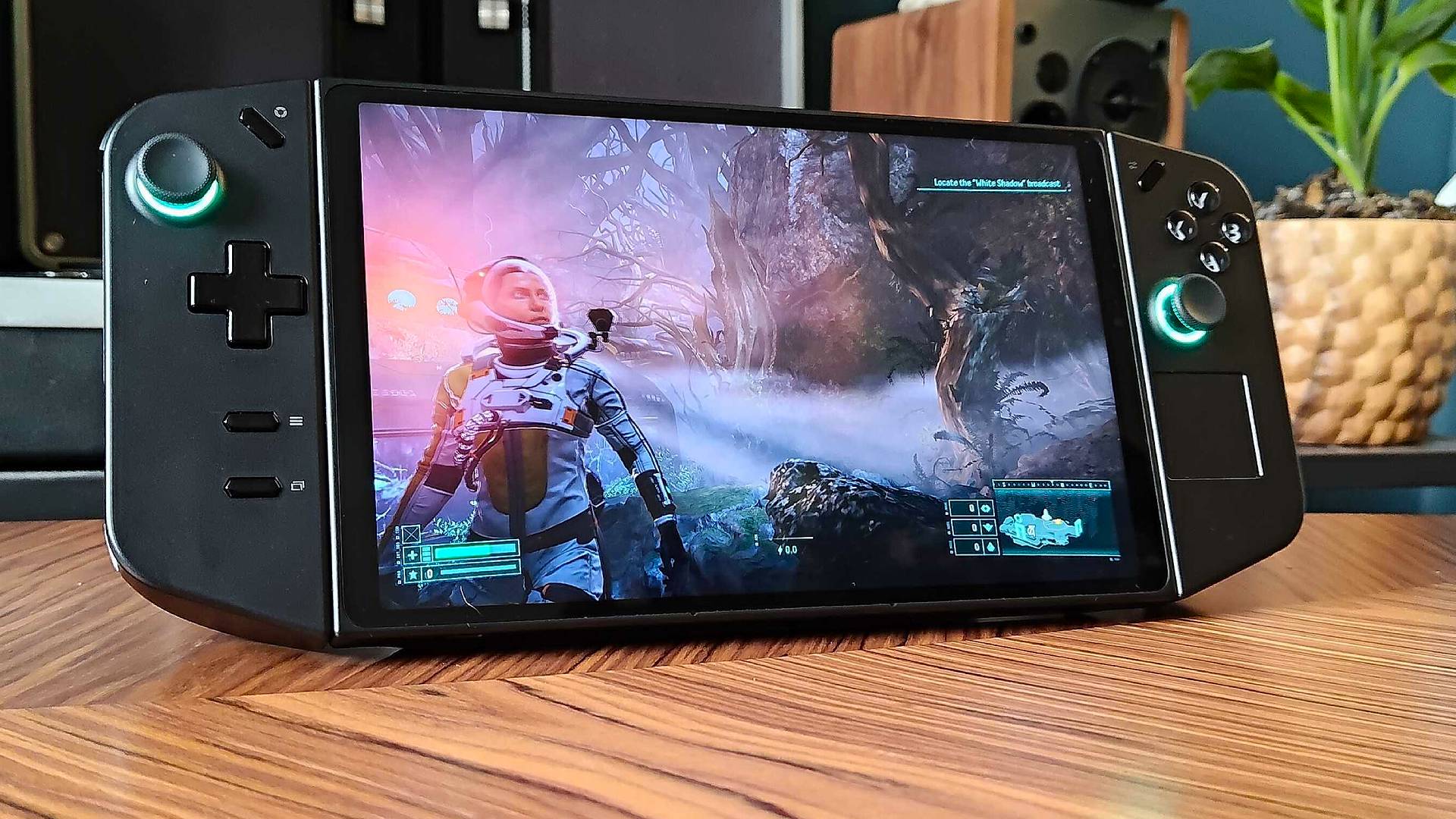
Shadow of the Tomb Raider runs pretty much how I expected, with performance starting to drop off with 40fps at 1600p. However, I was pretty disappointed with my Returnal figures during testing. Even when pulling resolution back to match the Steam Deck, I was only graced with a 33fps average. Whether a wider optimisation issue is to blame remains to be seen, as I recall experiencing similar issues with the Ayaneo 2S. Still, considering this handheld supports QHD resolutions, it feels like making full use of its screen even with sacrifices is a chore.
As for battery life, the Legion GO takes the same ‘live fast, die young’ approach as other handheld PCs. That said, I do feel like this specific portable was guzzling juice even faster, even when scaling back things like resolution, refresh rate, and TDP. I’m not exactly surprised by this given the burden of the TrueStrike controllers and the device’s loud, over eager fans, but I’d prefer not being restricted to around 1-3 hours cordless action.
Outside of benchmarking, I decided to finally dive into Robocop: Rogue City using the Legion GO. The idea of using the TrueStrike controllers in mouse mode to gun down creeps felt like a great idea in my head, but unfortunately, it didn't really pan out the way I was hoping. Performance was subpar, I couldn't boost fps to 60, even at 720p with AMD FSR switched on. Even if I was able to achieve the latter, the using the gamepads left me questioning why I'd use them instead of a regular mouse, as the experience felt largely the same, only far less ergonomic.
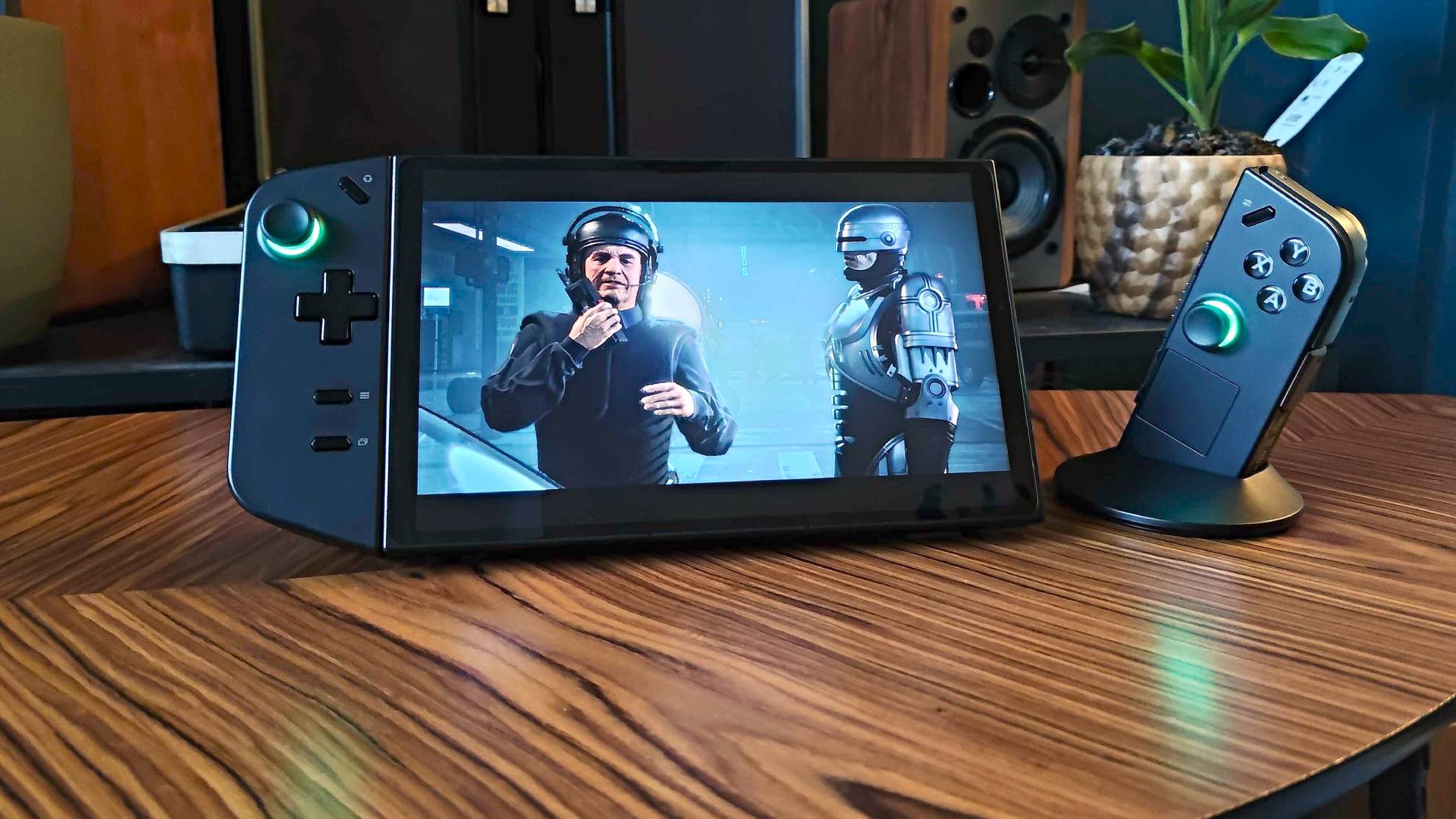
Should you buy the Lenovo Legion GO?
The Lenovo Legion GO is going to appeal to players looking for a big screen, lofty specs, and plenty of flair. That said, its ambitions ultimately make it feel less a slick Steam Deck rival and more like an experimental prototype. The AMD Ryzen Z1 Extreme within might be able to pull off similar moves to the Asus ROG Ally, but that’s not quite enough to carry the handheld PC to the same level in terms of overall experience.
If you are hellbent on picking up a handheld with a super fast refresh rate, plenty of horsepower, and the flexibility to run older PC games at 1440p. Lenovo will also undoubtedly improve the software side of things as time goes by, but at the moment, there are plenty of alternatives across the board that provide an overall much tighter package. Bigger isn’t always better, and that lesson will hopefully influence the portable gaming market through 2024 and beyond.
How I tested the Lenovo Legion GO
For just over a month, I used the Lenovo Legion GO as my main handheld. During my time testing the portable, I used a selection of games for benchmarking purposes, including Cyberpunk 2077, Hitman 3, Shadow of the Tomb Raider, and Returnal, while also playing Robocop: Rogue City in my spare time. I also hooked the device up to one of our best Steam Deck dock picks, the Baseus 6-in-1, to check external output and monitor compatibility.
For more information on how we test handhelds and other portable devices, check out our GamesRadar+ hardware policy.
Looking for more portable power? Check out the best gaming laptops for mobile rigs. Alternatively, swing by the best gaming PC for machines that'll live at your desk.







